Journal of Novel Physiotherapy and Physical Rehabilitation
A comparative study on different surface balance training on dyanamic postural control in collegiate female athletes
J Kaur*, Singh A and Grewal S
Cite this as
Kaur J, Singh A, Grewal S (2020) A comparative study on different surface balance training on dyanamic postural control in collegiate female athletes. J Nov Physiother Phys Rehabil 7(2): 036-042. DOI: 10.17352/2455-5487.000076Purpose: The study aims to evaluate the effectiveness of different surface balance training on dynamic posture control in collegiate female athletes.
Methods: The research was experimental in nature. The subjects were selected through purposive sampling. 40 female collegiate students were selected and divided into 2 groups. Group A was given star excursion balance training on stable surface and Group B was given Star Excursion Balance Training on unstable surface. Pre and post protocol assessment was done with the help of YBT on day 1st and end of the 4th week.
Results: Paired and Unpaired ‘t’ test was applied for Mean and Standard Deviation (SD) comparison within and between the Group A and Group B for variable Y Balance Test (YBT). The mean±SD values of YBT within the groups were significant and between the Groups, Group B was statistically significant and Group A was statistically non significant. The results suggest that balance training on unstable surface is more effective in improving dynamic posture control among collegiate female athletes.
Conclusion: The present study determined that unstable surface elicited the greater dynamic balance improvement compared to the stable surface. No such improvement was elicited in the stable surface which concluded that Star Excursion Balance Training will be effective as a dynamic balance improvement when it is performed on an unstable surface.
Introduction
Balance refers to an individuals ability to maintain their line of gravity within their Base of Support (BOS). It can also be described as the ability to maintain equilibrium [1]. It can either be categorised into static balance or dynamic balance. Static balance is the ability to sustain the body in static equilibrium or within its base of support. Dynamic balance has to be more challenging because it requires the ability to maintain equilibrium during a transition from a dynamic to a static state [2]. Balance performance has a fundamental role in many athletic activities and skill [3]. Maintenance of balance and stability depends on the control of joint position and motion, which heavily rely on nervous system, mainly controlled by the central nervous system, which processes the afferent visual, otolithic and somatosensory information [4].
The maintenance of balance, static or dynamic is an essential requirement for excelling in sports like soccer, basketball and gymnastics [5]. This has a large role to play in sports, especially when dynamic balance and stability have to be maintained in movement that occur at high speed. Dynamic balance is needed in sports that require stability while the athlete is in motion and are essential in highly mobile sports, in which the athlete must quickly react to changing circumstances [6]. In fact balance is “the most important component of athletic ability”. Sports demands good balance and control from athletes. Therefore, balance problems even mild ones may affect an athlete’s performance [7]. Studies revealed that sports injuries is estimated to be 10 to 35 per playing hours and often higher in younger and less skilled players approximately 60% to 80 % of severe injuries occur to the lower extremity and most commonly at the knee (29 %) or ankle (19%) [8]. To prevent injuries, rehabilitation specialists propose specific exercise program. Recent rehabilitation bibliography supports that balance exercise programs improve proprioception not only during the rehabilitation phase but also during the competition period [9]. Balance exercises aiming to improve proprioception, trains the brain to recognize the segment position of the bodies movement and train the proprioception pathways more effectively to reinforce athlete’s limbs effectively [10]. The goal of the balance exercises should be to reduce the time between neural stimuli and muscular response because the use of neuromuscular training program can potentially modify the collegiate athletics motion strategies, improves performance, lower the athlete’s motion strategies and lower the athlete’s risk for injury [11,12].
Unstable and stable surfaces have been used as part of balance training programs [13]. Stable exercise may include standing on one foot on a carpeted floor or playing Wii Fit balance games. Unstable surfaces training implements which include stability ball, wobble boards, and balance discs to reduce or eliminate an individual’s point of contact with solid ground [14]. Many of these exercises can be done with eyes open, eyes closed and could utilize external perturbations. Few researches are there that examined, which training surface for proprioceptive exercises, stable or unstable, yields the greatest dynamic postural stability improvements. Most athletes perform on stable surfaces, therefore these surfaces may be the most appropriate tool for training balance. However, many stable surface exercises are easily mastered, therefore unstable surfaces are often used after stable surfaces as a progression to make exercises more difficult [15]. To stimulate reflex joint stabilization some believes that activities should focus on the sudden alterations in joint position. Unstable surfaces provide sudden alteration in joint to stimulate reflex joint stabilization this makes training more dynamic and possibly applicable to sporting context [16,17]. Unstable surfaces require an increase lower leg muscle activity and proprioception during standing to a much greater extent than a rigid floor [18]. Unstable surface training will enhance performance via improvement of balance, kinesthetic sense, proprioception, and gradation of force because all movement requires both stability and mobility, it is valuable to train the two qualities simultaneously. Unstable surface training aims to develop afferent efficiency to reduce injury risk and improve the performance such training may help to establish proper agonist-antagonist co-contraction for the joint stability and improve rate of force development [19]. Balance training on an unstable surface may help to decrease the risk of subsequent injury for individuals who have suffered an ankle or knee injury [20].
Star excursion balance test which is usually used for dynamic balance assessment is composed of closed kinematic chain controlled motion and ability to balance on one leg. This can be used as a proprioception, coordination and balance training. The Star Excursion Balance Training (SEBT) implanted with both eyes open and eyes closed paradigms was shown to be more effective to restore functional stability than conventional therapy after ankle sprain [21,22]. Similarly a 4 week balance specific training program may benefit the athletes suffering from chronic ankle instability [23]. In addition 6 week of balance training using either a mini trampoline or a dura disc tool may improve stability in athletes suffering from lateral ankle sprain [24]. Previously many studies were conducted to find out the training program for improvement of balance of athletes. Main purpose of the present study is to find out the more effective training protocol to improve balance which help in prevention of injuries and increase the level of performance.
There are few studies to our knowledge in which SEBT was used as a training, to improve the dynamic postural stability on stable surface in case of ankle sprain, however No study has been done that compares the effect of star excursion balance training on stable and unstable surfaces in improving dynamic balance. Therefore this study was required to determine whether training on different (stable or unstable) surfaces elicits greater dynamic postural stability improvement among collegiate athletes.
Materials and methods
The research was experimental in nature. The subjects were selected through purposive sampling. The subjects of the study were selected from the local girls colleges in Ludhiana. A total number of 40 subjects were selected in the study and then divided into 2 groups, Group A and Group B with 20 subjects in each group. Healthy Female athletes presently on training or playing different outdoor games like basketball, badminton etc within the age of 17-24 had been selected. Players presently with current or recent history of musculoskeletal injury in the ankle, knee or hip joint or Under prior balance training, having history of neuromuscular disorders, Arthritis or rheumatologic disorders, Systemic disease that might interfere with sensory input. Any visual impairment, history of vestibular deficit. Drinking alcohol or any drug abuse that could affect balance within 24 before testing had been excluded from the study.
Procedure
Total 40 subjects were selected through purposive sampling from 17-24 years of age. The informed consent form was obtained from all the subjects and assigned into two Group A and Group B. Baseline measurement of YBT (Y Balance Test) and lower limb length of both the legs was measured prior to the treatment and after the treatment for the dynamic postural control by YBT on the 1st day of training and at the end of 4th week.
Y- Balance Test (YBT) is performed with the shoe off where subject has to stand on one leg on the center foot plate. While maintaining the single leg stance, the person reaches with the free limb in Anterior (A), Posteromedial (PM) and Posterolateral (PL) direction in relation to the stance leg. The maximum reach distance is measured by inch tape at the edge of the reach indicator. The greater successful reach distance from each direction is summed to a yield a composite reach distance for analysis of overall performance of the test. The ICC for intrarater reliability ranged from 0.85 to 0.91 and for interrater reliability ranged from 0.99 to 1.00. Composite reach score reliability is 0.91 for intrarater and 0.99 for interrater reliability. Y balance test has good to excellent reliability for measuring single limb stance excursion while performing dynamic balance testing [25] Figures 1-3.
Group A: Star excursion balance training was performed with subject standing at the centre of a grid laid on the training surface (Floor for stable surface group) with 8 lines extending at 45 degree increments from the centre of the grid into 8 directions- Anterior (A), Anterolateral (AL), Anteromedial (AM), Posterolateral (PL), Posteromedial (PM), Posterior (P), Medial (M), Lateral (L). Subject with hands on hip with maintained single leg stance try to touch the furthest point on the line with the forefoot as lightly as possible so that the reach leg will not provide considerable support in the maintenance of upright posture. Subjects then will return to a bilateral stance while maintaining their equilibrium. The total 10 minutes duration of training session consisted of 12 rounds of clockwise and 12 rounds counter clockwise foot reach, with 3 seconds rest between each direction. Frequency of the exercise training will be 4 times per week total duration of the balance training will be 4 weeks [21] Figure 4.
GROUP B: Star excursion balance training was performed with subject standing at the centre of a grid laid on the training surface (foam mattress for unstable surface group) with 8 lines extending at 45 degree increments from the centre of the grid into 8 directions- Anterior (A), Anterolateral (AL), Anteromedial (AM), Posterolateral (PL), Posteriomedial (PM), Posterior (P), Medial (M), Lateral (L). Subject with hands on hip with maintained single leg stance try to touch the furthest point on the line with the forefoot as lightly as possible so that the reach leg will not provide considerable support in the maintenance of upright posture. Subjects then will return to a bilateral stance while maintaining their equilibrium. The total 10 minutes duration of training session consisted of 12 rounds of clockwise and 12 rounds counter clockwise foot reach, with 3 seconds rest between each direction. Frequency of the exercise training will be 4 times per week total duration of the balance training will be 4 weeks [26] Figures 5,6.
Results
Data was meaningfully assorted through calculation of Mean and Standard Deviation. Later on Paired ‘t’ test was applied for comparison within the Groups A and Group B for YBT. Thereafter, Unpaired ‘t’ test was applied for comparison between the Group A and Group B for YBT. The level of significance was fixed at p<0.05.
Table 1 shows results for left lower limb.
Results of YBT for the Left Lower Anterior Segment (LLA).
Results of YBT for Group A of LLA. The ‘t’ value for pre and post test comparison of YBT within Group A was 4.785, which was statistically significant, at p<0.05. Paired ‘t’ test results of YBT for Group B of LLA. The ‘t’ value for pre and post comparison of YBT within Group B was 10.529, which was statistically significant, at p<0.05.
Results of YBT for the Left Lower Postero-medial Segment (LLPM).
Paired ‘t’ test results of YBT for Group A of LLPM. The ‘t’ value for pre and post test comparison of YBT within Group A was 4.079, which was statistically significant, at p<0.05. Shows paired ‘t’ test results of YBT for Group B of LLPM. The ‘t’ value for pre and post test comparison of YBT within Group B was 12.138, which was statistically significant, at p<0.05.
Results of YBT for the Left Lower Postero-lateral Segment (LLPL).
Shows paired ‘t’ test results of YBT for Group A of LLPL. The ‘t’ value for pre and post test comparison of YBT within Group A was 3.102, which was statistically significant, at p<0.05 and within Group B t value was 10.965, which was statistically significant, at p<0.05.
Table 2 shows result for right lower limb.
Results of YBT for the Left Right Anterior (LRA).
Results shows paired ‘t’ test results of YBT for Group A of LRA. The ‘t’ value for pre and post test comparison of YBT within Group A was 2.717, which was statistically significant, at p<0.05. Paired ‘t’ test results of YBT for Group B of LRA. The ‘t’ value for pre and post test comparison of YBT within Group B was 10.069, which was statistically significant, at p <0.05.
Results of YBT for the Lower Right Postero-medial (LRPM).
Shows paired ‘t’ test results of YBT for Group A of LRPM. The ‘t’ value for pre and post test comparison of YBT within Group A 4.807, which was statistically significant, at p<0.05. Shows paired ‘t’ test results of YBT for Group B of LRPM. The ‘t’ value for pre and post test comparison of YBT within Group B was 8.581, which was statistically significant, at p<0.05.
Results of YBT for the Lower Right Postero-lateral (LRPL).
Shows paired ‘t’ test results of YBT for Group A of LRPL. The ‘t’ value for pre and post test comparison of YBT within Group A was 6.582, which was statistically significant, at p<0.05. Shows paired ‘t’ test results of YBT for Group B of LRPL. The ‘t’ value for pre and post test comparison of YBT within Group B was 9.519, which was statistically significant, at p<0.05.
Table 3 shows result for the Left Side of Composite score.
The t’’ value for pre and post test comparison of YBT within Group A was 4.949, which was statistically significant, at p<0.05. Shows paired ‘t’ test results of YBT for Group B of LLCS. The ‘t’ value for pre and post test comparison of YBT within Group B was 12.055, which was statistically significant, at p<0.05.
Table 4 shows paired ‘t’ test for Lower Right of composite score.
The ‘t’ value for pre and post test comparison of YBT within Group A was 6.301, which was statistically significant, at p<0.05. The ‘t’ value for pre and post test comparison of YBT within Group B was 12.090, which was statistically significant, at p<0.05.
Table 5 shows unpaired ‘t’ test results of YBT for Group A and Group B of LLCS. The ‘t’ value for pre test comparison of YBT between Group A and Group B was 0.0591, which was statistically Non significant, at p>0.05. Shows paired ‘t’ test results of YBT for Group A and Group B of LLCS. The ‘t’ value for post test comparison of YBT within Group A and Group B was 3.543, which was statistically significant, at p<0.05.
Table 6 shows unpaired ‘t’ test results for YBT of Group A and Group B of LRCS. Pre The ‘t’ value for pre test comparison of YBT between the Group A and Group B was 0.885, which was statistically non significant, at p>0.05. Shows paired ‘t’ test results of YBT for Group A and Group B of LRCS. The t value for post test comparison of YBT between the Group A and Group B was 3.265, which was statistically significant, at p<0.05.
Discussion
Data was analyzed through paired ‘t’ test for comparison within the Group A amd within Group B, which was statistically significant.
The result of Group A who performed Star Excursion Balance Training on unstable surface came out to be significant. Findings of this effect are in agreement with the study done by Sabin indicated that performance during the SEBT, as measured by reach distance, is greater on a stable surface than on an unstable surface in all directions with non significant results only in the anterior direction [27]. The neurophysiology behind this is the somatosensory mechanism of postural control. An unstable testing surface has been speculated to challenge the somatosensory mechanism by increasing the difficulty to maintain balance so the results were significant on a stable surface than on unstable surface. The different muscles activated during the reach as proposed by Earl and Hertel who found that each reach direction activated the stance lower extremity muscles to a different extent. They reported that in the anterior reach direction the vastus medialis and lateralis were most active. During the posterolateral reach, the biceps femoris and anterior tibialis were most active. The anterior tibialis was most active in the posteromedial reach direction [28].
In addition, the influence of other risk factors (eg, flexibility, strength, or other anatomic or biomechanical causes) should be considered. The result of Group B who performed Star Excursion Balance Training on unstable surface came out to be significant, because of greater muscle activity & body movement that are observed when standing on an unstable surface [29]. Moreover in addition, exercising on an unstable surface increases postural sway, further promoting trunk muscle activation, such surfaces require an increase in lower leg muscle activity during standing to a much greater extent than a stable floor. Experimental evidence also proved that an unstable surface facilitates neuromuscular response by which a training adaptation occurs that leads to better balance [30,31]. To maintain an upright position on unstable surfaces the Central Nervous System (CNS) must continually integrate and (re)weigh information from visual, vestibular and proprioceptive systems to elicit coordinated muscular responses [32].
The study conducted by Marie [15] used a balanced training program on unstable surfaces for the healthy college students and noted the difference only in the posterolateral direction so this study supports the present study results. They suggest that there is either a treatment effect or practice effect with repeated execution of SEBT. Therefore it is difficult to determine if improvement on the SEBT in the present study were because of the practice or training effects, the other possibility of effectiveness of SEBT could be the improved complex movement of the body in the specific plane. However, significant changes found in the pre test and post test of SEBT training in group B. When trunk exercise was performed on a balance ball in this study, trunk muscle activation might have been further promoted because of the reaction force acting against the shaking of the surface so as the impact on lower limb which indicates that the unstable surfaces increase the postural stability than the stable base [33]. The exercises performed on an unstable surface in this study significantly improved muscle activation, postural control, and the gait speed of stroke patients. However, it is difficult to generalize because of the limited number of subjects.
The improvement in the reach excursion distances were found more in the right posterolateral direction as compared to the right posteromedial and right anterior directions because excursion involves the movement in three planes and SEBT which involves the eight excursions is the type of complex movement performed by the body in the multiple planes. So SEBT could be effective in improving the dynamic posture control among collegiate female athletes. The SEBT is not easiest to perform un stable surface so significant changes found in between the pre test and post test in YBT in Group B when compared to Group A.
Conclusion
The present study determined that unstable surface elicited the greater dynamic balance improvement compared to the stable surface. No such improvement was elicited in the stable surface. But it is also important to investigate the potentially important role of arm movements on postural stability, which will be valuable in elucidating some of the fundamental aspects of postural control.
This study concluded that Star Excursion Balance Training will be effective as a dynamic balance improvement when it is performed on an unstable surface. There are some Limitation to this study, Small sample size. Study was conducted for shorter duration and long time effects were not noted. Study shows the effect within age limit of 17-24 years which does not prove the effects with other age limit. The study only includes a confined area of population. The arm movements were not included in this study which plays a great role in postural stability.
Future scope of the study
In present study the sample size was small. In future, researchers can increase the sample size and can find additional significant result. The researchers can explore the effect of single limb SEBT on dynamic postural stability as a whole rather than using double limb SEBT. The study on dominant limb of the athletes can be used for future studies. For more comprehensive analysis of recovery a long term follow up study is recommended.
- Susan B O sullivan, Leslie G Portnry. Physical Rehabilitation (2014) :Sixth Edition. Philadelphia: FA Davis.
- Distefano LJ, Micheal CA, Darin PA (2009) Evidence Supporting Balance Training In Healthy Individuals: A Systemic Review. J Strength Cond Res 23: 2718-2731. Link: https://bit.ly/38GoE1P
- Adlerton AK, Moritz U, Moenilssen R (2003) Force plate and accelerometer measures for evaluating the effect of muscle fatigue on postural control during one legged stance. Physiother Res Int 8: 187-199. Link: https://bit.ly/2O4ite5
- Lepers R, Bigard AX, Diard JP, Gouteyron JF, Guezennec CY (1997) Posture control after prolonged exercise. Eur J Appl Physiol Occup Physiol 76: 55-61. Link: https://bit.ly/31OJRVx
- Gerbino PG, Griffin ED, Zurakowski D (2007) Comparison of standing balance between female collegiate dancers and soccer players. Gait posture 2: 501-507. Link: https://bit.ly/2O0BNJr
- Ackland TR, Elliot B, Bloomfield J (2009) Applied anatomy and biomechanics in sports: 2nd edition :211. Link: https://bit.ly/2O1JsHa
- Gambetta (1995) Everything in balance. Train Conditioning 2: 15-18.
- Arendt E, Dick R (1995) Knee injury patterns among men and women in collegiate basketball and soccer. Am J Sports Med 23: 694-701. Link: https://bit.ly/38GoVln
- Caraffa A, Cerulli G, Projetti M, Aisa G, Rizzo A (1996) Prevention of anterior cruciate ligament injuries in soccer, A prospective controlled study of proprioceptive training. Knee Surg Sports Traumatol Arthrosc 4: 19-21. Link: https://bit.ly/2Z1Unav
- Sammarco GJ (1995) Rehabilitation of the foot and ankle, Mosby year book. 295-301. Link: https://bit.ly/3e9Nd8t
- Gioftsidou A, Malliou P (2006) Preventing lower limb injuries in soccer players. Journal of Strength Conditioning Research 28: 2-5. Link: https://bit.ly/2D5qE7M
- Chappell JD, Limpisvasti O (2008) Effects of a neuromuscular training program on the kinetics and kinematics of jumping task. Am J Sports Med 36: 1081-1086. Link: https://bit.ly/3gsLixa
- Hrysomallis C (2007) Relationship between balance ability, training and sports injury risk. Sports Medicine 37: 547-556. Link: https://bit.ly/2BJPcCW
- Cressey EM, West CA, Tiberio DP, Kraemer WJ, Maresh CM (2007) The effects of ten week of lower body unstable surface training on markers of athletic performance. J Strength Cond Res 21:561-567. Link: https://bit.ly/2ZFkq6b
- Marie K (2011) The effect of stable and unstable training surface on dynamic postural stability, Electronic Thesis and Dissertation. Georgia Southern University Link: https://bit.ly/2Z1RrdO
- Lephart SM, Pincivero DM, Giraldo JL, Fu FH (1997) The role of proprioception in the management and rehabilitation of athletic injuries. Am J Sports Med 25: 130-137. Link: https://bit.ly/3e2SYVg
- Eisen TC, Danoff JV, Leone JE, Miller TA (2010) The effects of multiaxial and uniaxial unstable surface balance training in college athletes. J Strength Cond Res 24: 1740-1745. Link: https://bit.ly/2O0dnQ4
- Ivanenko YP, Levik YS, Talis VL, Gurfinkel V (1997) Human equilibrium on unstable support: the importance of feet supports interaction. Neurosci Lett 235: 109-112. Link: https://bit.ly/2ZHUuXE
- Ruiz R, Richardson MT (2005) Functional balance training using a domed device. Journal of Strength Conditioning Research 27: 50-55.
- Wester JU, Jespersen SM, Nielsen KD, Neumann L (1996) Wobble board training after partial sprain of the lateral ligaments of the ankle, a prospective randomized study. J Orthop Sports Phys Ther 23: 332-336. Link: https://bit.ly/38tBjEU
- Chaiwanichsiri D, Lorprayoon E, Noomanoch L (2005) Star excursion balance training: Effects on ankle functional stability after ankle sprain. J Med Assoc Thai 88: 90-94. Link: https://bit.ly/3gw4Qkk
- Raty HP, Impivaara O, Karppi SL (2002) Dynamic balance in former elite male athletes and in community control subjects. Scand J Med Sci Sports 12: 111-116. Link: https://bit.ly/2ZJYZRs
- Hale SA, Hertal J, Olmsted-Kramer LC (2007) The effects of a 4 week comprehensive rehabilitation program on postural control and lower extremity functions in individuals with chronic ankle instability. J Orthop Sports Phys Ther 20: 303-331. Link: https://bit.ly/3iyzzPv
- Kidgell DJ, Horvath DM, Jackson BM, Seymour PJ (2007) Effects of six week of dura sac and mini trampoline balance training on postural sway in athletes with functional ankle instability. J Strength Cond Res 21: 466-469. Link: https://bit.ly/3iBDz1x
- Plisky PJ, Gorman PP, Butler RJ, Kiesel KB, Underwood FB, et al. (2006) The reliability of an instrumented device for measuring components of the star excursion balance test. N Am J Sports Phys Ther 4: 92-99. Link: https://bit.ly/2VRgjCW
- Hertal J, Braham RA, Hale SA, Kramer LCO (2006) Simplifying the star excursion balance test: Analysis of subjects with and without chronic ankle instability. J Orthop Sports Phys Ther 36: 131-137. Link: https://bit.ly/3grkJIE
- Sabin MJ, Ebersole KT, Martindale AR, Price JW, Broglio SP (2010) Balance performance in male & female collegiate basketball athletes: Influence of testing surface. J Strength Cond Res 24: 2073-2078. Link: https://bit.ly/2D5rOAa
- Earl JE, Hertel J (2001) Lower extremity muscle activation during the Star Excursion Balance Tests. J Sport Rehab 10: 93-104. Link: https://bit.ly/2D7S2SB
- Lima LM, Reynolds KL, Winter C, Paolene V, Jones MJ (2003) Effects of physioball & conventional floor exercises on early phase adaptations in back & abdominal core stability and Balance in women. J Strength Cond Res 17: 721-725. Link: https://bit.ly/2NZcBms
- Karthikbabu S, Nayak A, Vijayakumar K, Misri ZK, Suresh Bv, et al. (2011) Comparison of physio ball and plinth trunk exercises regimens on trunk control and functional balance in patients with acute stroke: a pilot randomized controlled trial. Clin Rehabil 25: 709–719. Link: https://bit.ly/31MlVlL
- Gantchev GN, Dimitrova DM (1996) Anticipatory postural adjustments associated with arm movements during balancing on unstable support surface. Int J Psychophysiol 22: 117-222. Link: https://bit.ly/2AxCQ0l
- Mickle KJ, Munro BJ, Steele JR (2011) Gender and age affect balance performance in primary school-aged children. J Sci Med Sport 14: 243-248. Link: https://bit.ly/3f1jkrW
- Kyoung-Sim Jung, Hwi-Young Cho, Tae-Sung (2016) Trunk exercises performed on an unstable surface improve trunk muscle activation, postural control, and gait speed in patients with stroke. J Phys Ther Sci 28: 940–944. Link: https://bit.ly/38wuqTs
Article Alerts
Subscribe to our articles alerts and stay tuned.
 This work is licensed under a Creative Commons Attribution 4.0 International License.
This work is licensed under a Creative Commons Attribution 4.0 International License.
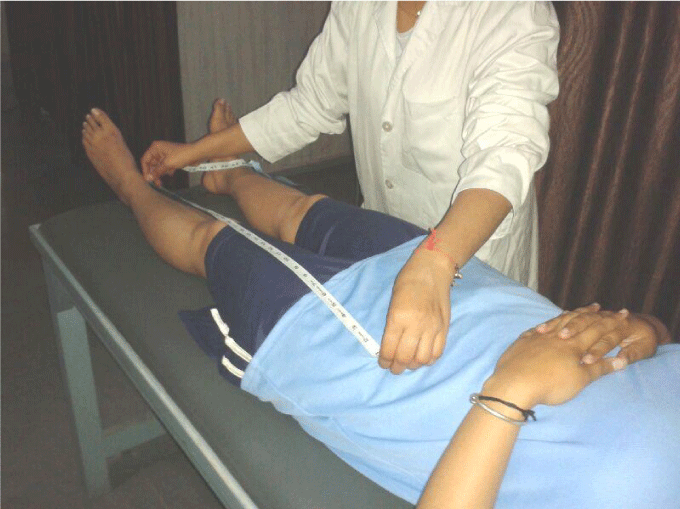
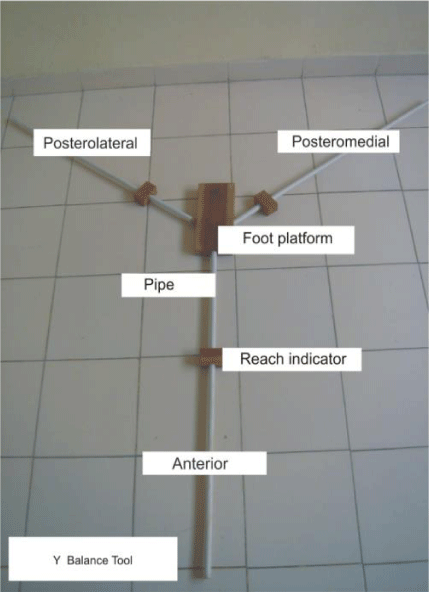
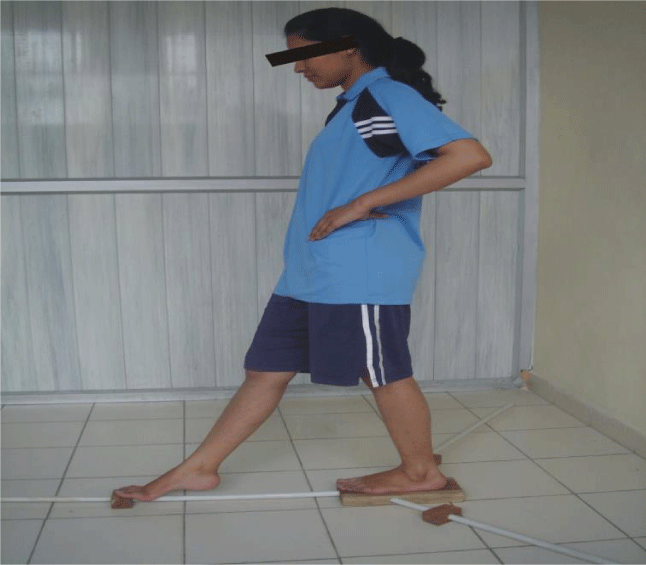
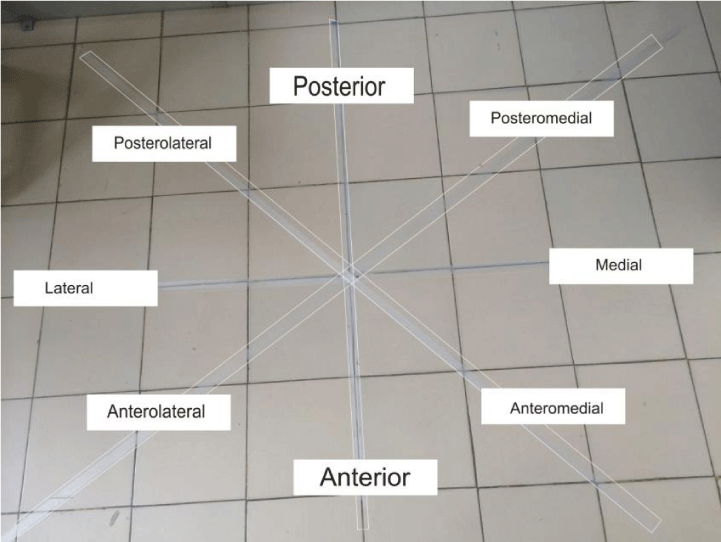
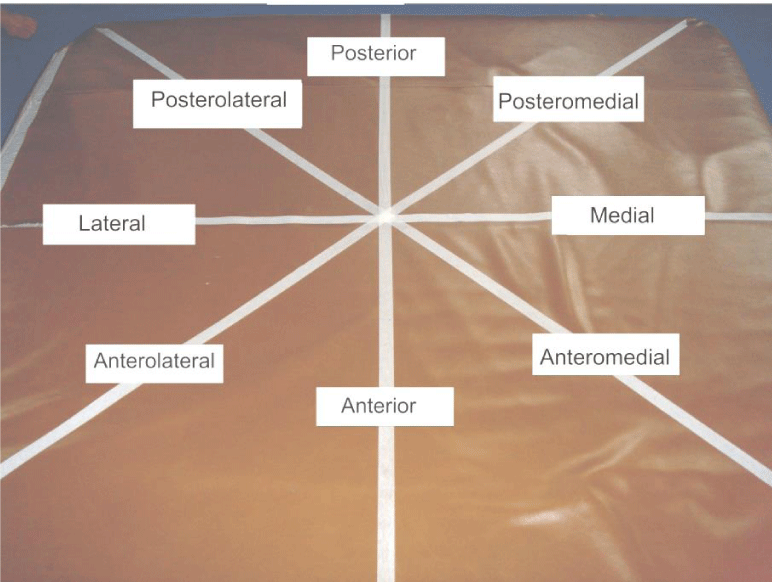
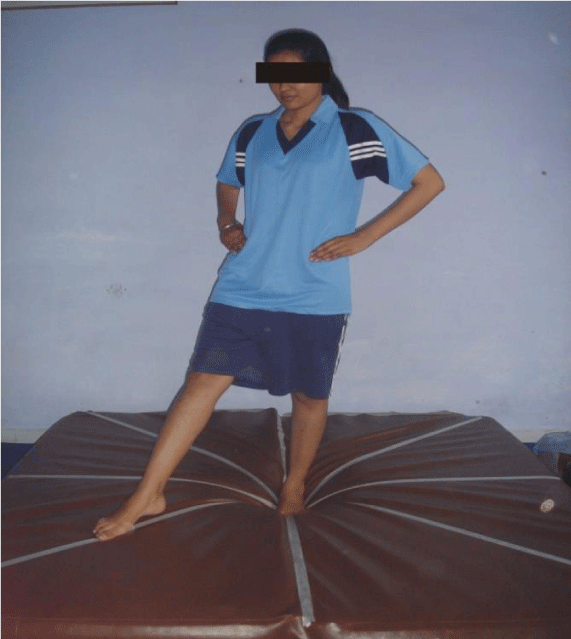

 Save to Mendeley
Save to Mendeley
